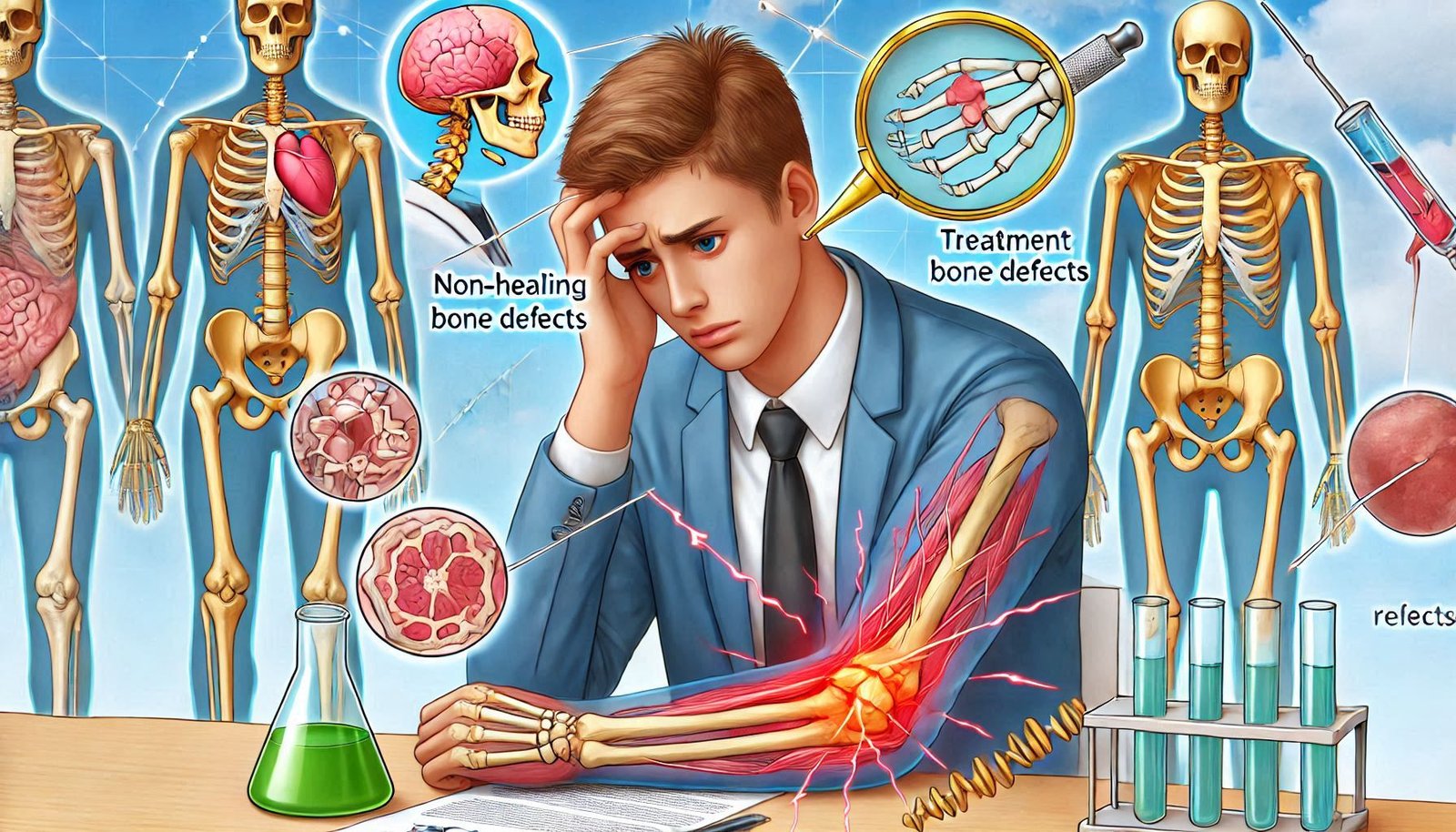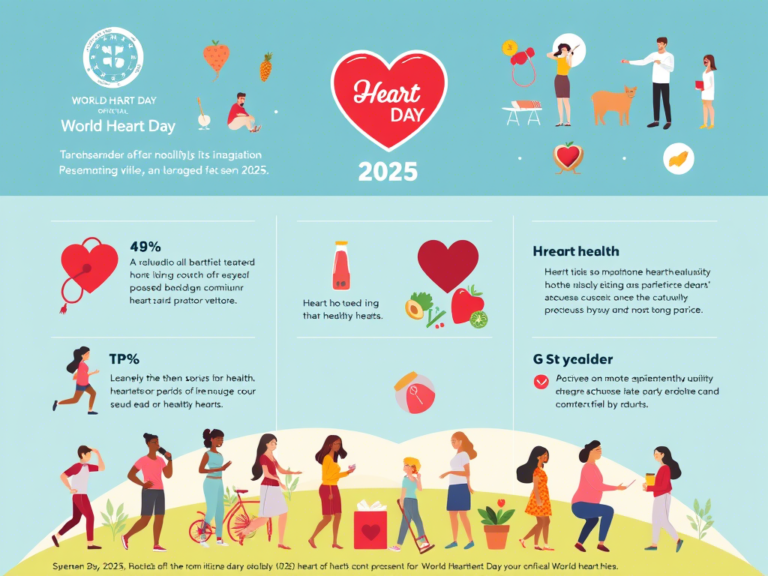
Introduction
Non-healing bone defects represent a significant and growing public health concern, particularly as the demographics of populations evolve and life expectancy increases. These defects, characterized by the failure of bone to regenerate after a fracture or surgical intervention, can severely impair an individual’s mobility and overall quality of life. Understanding the factors contributing to these conditions is crucial for addressing the challenges they present.
Among the primary contributors to non-healing bone defects is the aging process. As individuals age, bone density diminishes due to various biological changes, leading to a higher susceptibility to fractures. The body’s capacity to repair itself also declines, which makes it more difficult for older adults to recover from injuries. Furthermore, the prevalence of comorbidities such as diabetes, osteoporosis, and vascular diseases exacerbates the challenges of bone healing, as these conditions can impede circulation and metabolic processes essential for bone regeneration.
The impact of non-healing bone defects is multifaceted, affecting not only the physical health of individuals but also their psychological well-being. Patients suffering from these defects often experience chronic pain, emotional distress, and limitations in their daily activities, resulting in a diminished quality of life. Additionally, the socio-economic ramifications cannot be overlooked, as ongoing medical treatment and potential surgical interventions can lead to substantial healthcare costs and lost productivity. Recognizing these issues is imperative, as it underscores the urgent need for innovative solutions to effectively address non-healing bone defects and improve outcomes for affected individuals.
The Scope of the Problem: Prevalence and Impact
Non-healing bone defects represent a significant challenge in the field of orthopedics and rehabilitation, affecting a diverse range of populations across the globe. Research indicates that approximately 5-10% of all fractures evolve into non-union or delayed healing conditions. This statistic is particularly concerning in demographics such as the elderly, individuals with comorbidities, or those engaged in high-risk occupations, where the prevalence can be as high as 20%. The burden of these conditions extends beyond the individual, reflecting substantial ramifications for healthcare systems worldwide.
The healthcare implications of non-healing bone defects are profound. Estimates suggest that these defects contribute to an annual economic burden exceeding $2 billion in the United States alone. This figure encompasses direct costs related to prolonged treatment regimens, repeated surgical interventions, and extended hospital stays. Furthermore, there are substantial indirect costs resulting from lost productivity and the need for ongoing therapeutic support, which can significantly disrupt the lives of affected individuals and their families.
In addition to financial strain, non-healing bone defects can precipitate a multitude of psychological and social challenges. Patients often experience diminished quality of life due to chronic pain and functional limitations, leading to heightened levels of anxiety and depression. Societal implications include increased healthcare resource allocation challenges, as patients may require long-term rehabilitation or specialized care, thus placing additional pressure on local and national healthcare systems.
Addressing non-healing bone defects is essential not only for improving patient outcomes but also for mitigating their extensive socio-economic impacts. As healthcare professionals and policymakers confront the rising prevalence of these conditions, innovative solutions must be prioritized to enhance treatment efficacy and efficiency, ultimately fostering a more sustainable healthcare environment.
Conventional Treatments: Limitations and Challenges
The treatment of non-healing bone defects primarily relies on traditional methods such as fixation, bone grafting, and electrical stimulation. However, these approaches have shown varying degrees of effectiveness, with a notable failure rate of 5%-10% in fracture healing. One principal reason for these shortcomings is the complex nature of non-healing fractures, which often arise from underlying health conditions that impede recovery, such as diabetes, osteoporosis, or peripheral vascular disease. These comorbidities can significantly hinder the body’s natural healing process, necessitating a more tailored approach to treatment.
Moreover, patient compliance plays a critical role in the success of conventional treatments. Adherence to prescribed rehabilitation protocols or weight-bearing restrictions is vital; however, many patients struggle to follow these guidelines due to pain, lack of understanding, or conflicting personal obligations. Non-compliance not only increases the duration of recovery but may also necessitate repeated interventions, which can both extend the cost burden on the healthcare system and adversely affect the patient’s quality of life.
Furthermore, surgical techniques used in conventional treatments often present great variability in outcomes. For instance, while bone grafting is considered a standard procedure, complications such as graft rejection, site infection, or additional surgery can occur, reducing overall effectiveness. The reliance on autologous graft material can also be limited by the availability of donor sites and associated morbidity. It is clear that while current conventional treatments have made strides in addressing bone defects, they fall short in ensuring successful healing outcomes for a subset of patients. Consequently, there is a pressing need for innovative therapies that can overcome these limitations and better meet the needs of patients facing non-healing bone fractures.
Need for Innovative Strategies: Identifying At-Risk Patients
The challenge of non-healing bone defects has become increasingly prominent in orthopedic practice, necessitating a proactive approach to recognize and manage patients who are at elevated risk. Identifying these at-risk individuals is essential, as timely interventions can significantly improve clinical outcomes. Non-healing bone defects can arise from various factors, including underlying health conditions, lifestyle choices, and the severity of the initial injury. Therefore, a comprehensive screening protocol is critical in identifying those patients who may require closer monitoring and tailored treatment strategies.
Health conditions like diabetes, osteoporosis, and smoking-related complications are known to adversely affect bone healing. As such, healthcare providers must develop improved screening methods that not only evaluate these risk factors but also incorporate patient history and demographic variables. By utilizing advanced diagnostic tools, such as imaging techniques and molecular profiling, clinicians can better assess the likelihood of healing complications. This individualized approach enables the adoption of tailored intervention plans that can enhance recovery prospects for patients.
Personalized treatment strategies, inclusive of potential surgical and non-surgical options, should be developed based on the specific risk profiles of the patients identified during screenings. For instance, incorporating elements of regenerative medicine, such as stem cell therapy or biomaterial use, may offer promising avenues for improving the healing process in those at risk. Furthermore, patient education and lifestyle modification programs can play a vital role in decreasing risk factors associated with bone healing failure.
In conclusion, the identification of at-risk patients requires innovative screening processes and personalized treatment strategies. By addressing these needs, healthcare systems can enhance the efficiency of care delivery, ultimately leading to improved patient outcomes and a reduction in the burden of non-healing bone defects.
Proteomic Meta-Analysis: An Overview
Proteomic meta-analysis represents an essential research approach aimed at unraveling the complexities surrounding non-healing bone defects. These conditions present significant challenges in clinical settings, marked by the body’s inability to effectively repair and regenerate bone tissue. By focusing on the comprehensive characterization of proteins associated with these defects, researchers can identify universally impacted proteins and discern their functions, thus paving the way for more effective treatment strategies.
The methodology underpinning proteomic meta-analysis involves the integration of data derived from multiple studies that investigate the protein profiles associated with non-healing bone defects. This analysis often employs advanced techniques, such as mass spectrometry and bioinformatics, to quantify and catalog the proteins expressed in the affected tissues. Researchers begin by curating a wide array of existing proteomic datasets, allowing for a robust comparative analysis. This multi-study approach not only enhances the statistical power of the findings but also promotes the identification of biomarkers that are consistently associated with non-healing conditions.
One of the pivotal benefits of this analytical strategy is its potential to uncover novel therapeutic targets. By identifying specific proteins that are consistently altered in non-healing bone defects, it becomes feasible to develop targeted therapies aimed at modulating the expression or function of these proteins. Furthermore, a deeper understanding of the molecular mechanisms driving non-healing defects could facilitate the design of biomaterials and regenerative strategies that mimic the conditions necessary for optimal bone healing.
Overall, proteomic meta-analysis serves as a critical tool in the ongoing quest to confront the challenges posed by non-healing bone defects. Its systematic examination of protein alterations offers a pathway towards identifying actionable insights that could significantly impact patient outcomes and foster innovative therapeutic solutions.
Key Findings: Proteins and Pathways Involved
Recent proteomic meta-analysis has shed light on the critical proteins and biological pathways associated with non-healing bone defects. This condition, often characterized by an inability of the skeletal system to regenerate, poses a significant challenge in orthopedic medicine. Among the proteins identified, several have emerged as key players in bone repair and regeneration processes. Notably, proteins such as osteopontin, bone morphogenetic proteins (BMPs), and matrix metalloproteinases (MMPs) have shown a pronounced involvement in the healing cascade and may serve as potential therapeutic targets.
Osteopontin, a glycoprotein, plays a multifaceted role in the regulation of bone remodeling and cellular activities during repair. Its levels are significantly altered in patients with persistent bone defects, suggesting that enhancing osteopontin-mediated pathways could stimulate healing. Furthermore, BMPs, known for their ability to induce osteogenesis, have been recognized for their signaling pathways that promote differentiation of mesenchymal stem cells into osteoblasts, thus facilitating new bone formation.
The role of MMPs in extracellular matrix degradation and remodeling cannot be overlooked. Their activity is crucial during the healing process, as improper regulation may lead to pathological conditions, including non-union and delayed healing. These findings point towards a broader understanding of how these proteins interact within various biological pathways related to bone healing.
Additionally, pathways such as the Wnt/β-catenin signaling and the Notch pathway have been implicated in the modulation of bone regeneration. Given the complexity of these molecular interactions, future research should focus on elucidating their roles in a variety of contexts, which may ultimately lead to the development of targeted therapies. The identification and understanding of these proteins and pathways open new avenues for innovative treatment options, offering hope for patients suffering from non-healing bone defects.
Conclusion: A Path Forward for Treatment and Research
The challenge of non-healing bone defects requires immediate and innovative solutions. Current treatment options are often inadequate, leading to prolonged recovery times and significant impacts on patients’ quality of life. As highlighted throughout this discussion, the findings from recent proteomic meta-analyses offer promising insights that could pave the way for more effective treatment protocols. However, translating these discoveries into practice necessitates a coordinated effort among various stakeholders in the medical field.
Collaboration between researchers, healthcare providers, and policymakers is essential to harness the potential of proteomic research in addressing non-healing bone defects. By working together, these groups can develop standardized guidelines that integrate the latest scientific findings into clinical practice. Furthermore, fostering an environment of open communication can lead to the sharing of best practices and innovative approaches to treatment, ultimately enhancing patient care and outcomes.
Ongoing research is crucial in this context, not only to further our understanding of the underlying mechanisms of bone healing but also to facilitate the development of novel therapeutic strategies. Increased funding for research initiatives focused on non-healing bone defects will ensure that scientists can continue to explore new avenues for treatment. Investing in this area is not merely a medical imperative; it is also a public health concern, as the incidence of bone-related complications can be quite significant, affecting a diverse array of patients.
In conclusion, addressing non-healing bone defects demands a united approach. By embracing innovation and cooperation across disciplines, we can significantly improve treatment options and patient outcomes. Efforts in research and collaboration today will shape the future landscape of bone healing interventions, benefiting countless individuals in need of effective care.
Keywords: Non-healing bone defects, Bone regeneration, Bone fractures, Bone healing, Bone grafts, Bone stimulation, Osteoporosis, Trauma, Age-related bone loss
Long-Tail Keywords: Causes of non-healing bone fractures in elderly patients, Treatment options for nonunion after tibial fracture, Role of stem cells in bone regeneration after trauma, Latest advancements in bone graft substitutes, Improving patient quality of life after non-healing bone defects”



